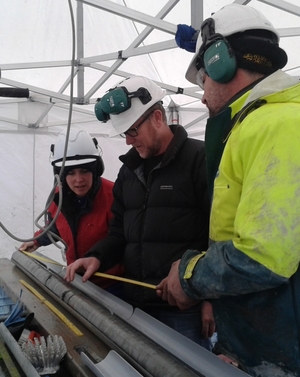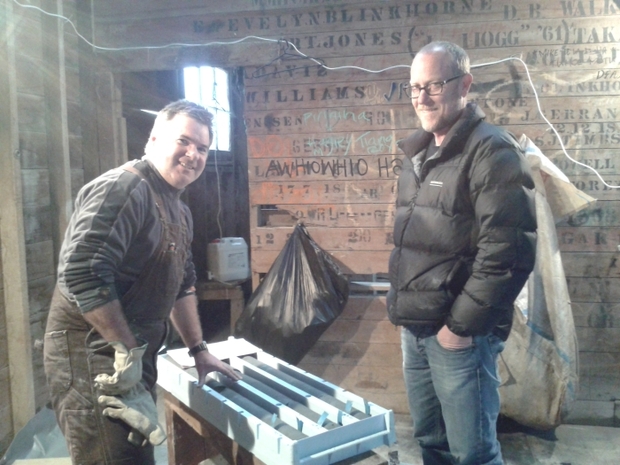by Veronika Meduna Veronika.Meduna@radionz.co.nz
Geologists from Victoria University's Antarctic Research Centre have set up a drill rig on a remote sheep station near Taihape – not to look for oil or gas but to study ancient shorelines. The steep hill country at Siberia Station is part of the Wanganui Basin, one of the world’s best places to explore a detailed record of past changes in sea levels.

 On the surface, there’s nothing to give away that this farmland is an important geological site, but thanks to the combined forces of tectonic uplift and erosion, the rocks just underneath the pasture are three million years old, from a geological time period called the Pliocene. This period lasted from about 2.5 to 5 million years ago, but Tim Naish, who leads the drilling project, says geologists are particularly interested in a warm period during the middle Pliocene.
On the surface, there’s nothing to give away that this farmland is an important geological site, but thanks to the combined forces of tectonic uplift and erosion, the rocks just underneath the pasture are three million years old, from a geological time period called the Pliocene. This period lasted from about 2.5 to 5 million years ago, but Tim Naish, who leads the drilling project, says geologists are particularly interested in a warm period during the middle Pliocene.
'This was a time in Earth’s history when the world was a few degrees warmer than it is today and greenhouse gas concentrations, particularly carbon dioxide, in the atmosphere were at levels comparable to what we have today. The Pliocene has become particularly interesting as an analogue of what happens to the world if we sustain carbon dioxide levels at 400ppm or above for hundreds to thousands of years.’
The geologists plan to drill 500 metres deep into the sediment layers, which will take them 3.5 millions years back in time. Veronika Meduna joins the team as they extract a drill core from about 150 metres deep and run through the first analysis. While a full chemical analysis will take place over the next few weeks in the university laboratories, Gavin Dunbar (pictured on the left below, with Tim Naish) works from an impromptu lab set up in a historic woolshed. There, he scours each core segment for signatures of ancient sea levels, monitoring the grain size of the sediment and any remnants of life.
'There are microfossils known as foraminifera that live only at certain water depths, and as sea level goes up and down, benthic organisms change and so does the grain size, with particles becoming finer as you go deeper.'

Past changes in global sea levels can be linked to changes in the size of Antarctica’s ice sheets. The current understanding of how ice sheets come and go is based on Milankovitch Cycles, which describe small periodic changes in the way our planet travels around the sun. The Serbian scientist Milutin Milankovitch identified three different cycles – repeating every 100,000 years, 41,000 years and 21,000 years – that change the amount and distribution of solar energy Earth receives, and these cycles set the timing of ice ages. “But what we don’t know is exactly how they do that,” says Gavin Dunbar.
From earlier research, geologists estimate that sea levels during the Pliocene period were about 20 metres higher than today. This estimate is based on several lines of evidence, from old shorelines on submerged atolls, uplifted shorelines in Australia and North America, and the detailed record in the Wanganui Basin. Tim Naish says the aim of this drilling project is to reduce the uncertainty in this estimate. “From a societal point of view, it is a really important thing to be able to do given that this type of climate is what we are facing in the coming centuries.”

